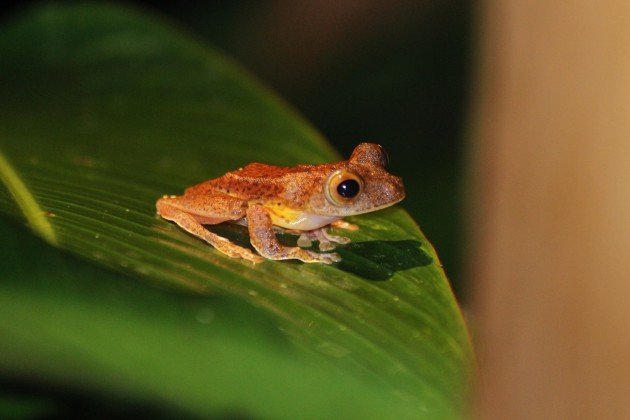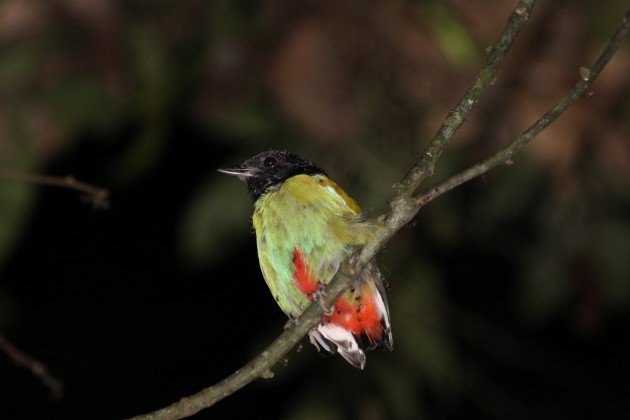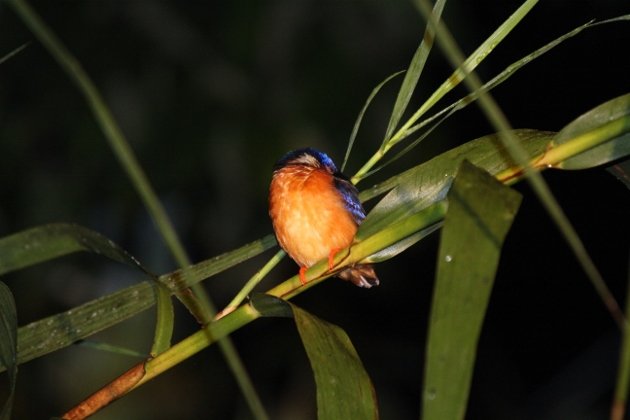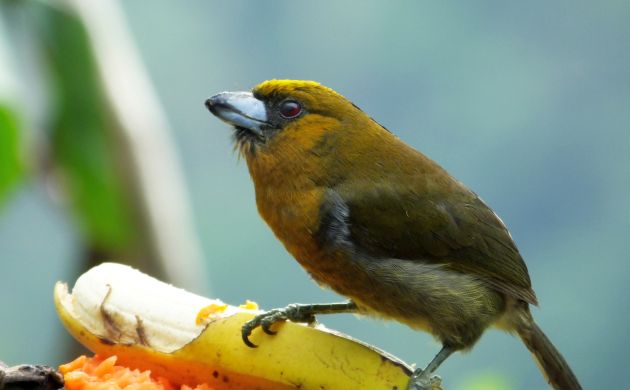
I love spotlighting, and I hate spotlighting. In fact, it’s hard to think of a wildlife watching activity I’m more conflicted about, other than perhaps alomost industrial levels of diving in fragile reefs (or the remains thereof). On the one hand it can be an outstanding opportunity to see wildlife you usually don’t, and if done carefully it doesn’t do any harm. On the other hand, it can sometimes be done very badly. What’s a wildlife enthusiast to do?
Part of the appeal of spotlighting for wildlife (and by spotlighting, I’m talking about for the watching, not the shooting) is the unpredictability of it. This can also be a curse, as I have spent many nights wandering around seeing precisely nothing. Or nothing big at least. But spotlighting brings you the things you don’t see so much of when birding. It brings mammals, and frogs in profusion, and reptiles, and insects. So many insects. And spiders, and scorpions. Sometimes in a forest you’d be forgiven for thinking there was nothing but birds, monkeys and squirrels (and mosquitos, obviously), and then at night you start seeing civets, wallabies, and tarantulas. Vipers, mousedeer and bushbaies. If you have a passion for wildlife in general, it’s a whole other world.
A lot of wildlife destinations have noticed this too, and many places offer spotlighting trips as part of the package (or an optional extra). And the results can be decidedly mixed. When I was in Borneo over Christmas we went out on four occasions, with results that were, well, mixed. Decidedly so, you might say.
Sepilok was the first, and to my mind probably the best. We toured the Orangutan Rehabilitation Centre after dark, and we did it by foot in a group that was just my family and a guide. It was the perfect experience, the guide had astonishing eyes and found things we would have passed over if we had been alone. Vipers dominated, as well as some smaller snakes, but we also found a Sunda Stink-badger and a sleeping Hooded Pitta. Best of all, the guide moved on quickly from things like the pitta rather than disturb it.
 Hooded Pittas make any trip amazing
Hooded Pittas make any trip amazing
After Sepilok was the Kinabantangan River. The organized night boat trip was certainly the worst, sadly. This wasn’t entirely the fault of the guide, who had similarly good eyes, but in no small part was awful because there were so many boats on the river, all swishing enormous beams to and fro across the river. It felt like Blitz-era London, and it didn’t surprise me that pretty much all we saw where a series of increasingly bleary looking kingfishers trying to sleep. What was more problematic was the guide staying on these kingfishers so that the other people on the boat could take a seemingly endless stream of photos of these poor birds.
 I have one shot of this Blue-eared Kingfisher. Somewhere in the world someone has about a million.
I have one shot of this Blue-eared Kingfisher. Somewhere in the world someone has about a million.
The following night my brother and I took ourselves out by foot for a bit. I love doing this, what you lose in expert guides or powerful lights you make up for with reduced disturbance. We found some more sleeping birds, lots of frogs, and a Lesser Mousedeer – a new species for me! Best of all the lodge also set out a large white board with lights on, which attracted lots of insects and in turn bats.
The spotlighting at Danum Valley was mixed too. As with Kinabantangan, there were too many people on the first night, and since we were on the second truck we didn’t see much except for the brief time we weren’t following the first. Noisy crowds are as bad for wildlife at night as during the day, who knew? But on the second night we went on foot in a small group and saw a lot more, including flying frogs, a Common Banded Civet and best of all a brief view of a Buffy Fish Owl!
It’s hard to know how to predict how a spotlighting experience is going to go. It pays to ask ahead about how the tour will be run, and pick the smaller ones for your own enjoyment and the wellbeing of the animals involved. That said, sometimes the temptation of big ticket possibilities it too strong to resist. Perhaps, if you’ve had some particularly good, or bad, experiences, you could share them in the comments.





 New writers welcome – please contact us for details.
New writers welcome – please contact us for details.

















Walking across the dam wall at Fogg Dam near Darwin and seeing all the snakes! It is supposed to be the most snake infested habitat known and a scientist was marking them and rarely caught the same ones again even though he had been catching for months. They still do the walks according to the “Friends of Fogg Dam” website. Full moon walks are always good as well……..anywhere! 🙂
I feel spotlighting is inappropriate. It may be (or seem to be) harmless. But I knew of one VERY experienced, almost celebrated, ornithologist who would go spotlighting shorebirds and ducks so that he could catch and band/ring them. I just felt that was poor ethics.
Great post